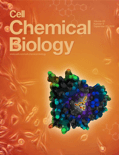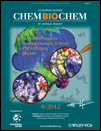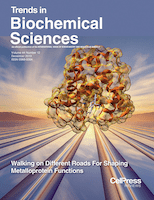
Cell Chemical Biology
Scope & Guideline
Bridging Disciplines to Transform Life Sciences.
Introduction
Aims and Scopes
- Chemical Biology Techniques:
The journal encompasses a wide range of chemical biology techniques, including chemical proteomics, bioorthogonal chemistry, and small molecule discovery, providing insights into cellular processes. - Targeted Protein Degradation:
A significant area of focus is on targeted protein degradation, including the development of PROTACs (proteolysis-targeting chimeras) and their applications in cancer therapy and other diseases. - Metabolism and Disease:
Research frequently explores the role of metabolism in disease, particularly cancer and infectious diseases, highlighting how metabolic pathways can be targeted for therapeutic interventions. - Immunology and Therapeutics:
The journal features studies on immunology, including immune modulation and therapeutic strategies involving antibodies and small molecules, emphasizing their potential in treating various conditions. - RNA Biology:
An important aspect of the journal includes the investigation of RNA biology, focusing on RNA modifications, non-coding RNAs, and their roles in cellular regulation and disease. - Chemical Genomics:
The intersection of chemical biology and genomics is a key theme, with research aimed at understanding gene function and regulation through chemical probes and small molecules.
Trending and Emerging
- Induced Proximity Techniques:
Research on induced proximity, particularly through the use of molecular glues and PROTACs, has gained significant attention, highlighting innovative strategies for targeted degradation and modulation of protein functions. - Chemical Immunology:
The field of chemical immunology is expanding, with increasing studies focused on immune-modulating compounds and their applications in immunotherapy, particularly in cancer treatment. - Metabolomics and Disease:
An emerging focus on metabolomics is evident, with studies investigating how metabolic changes influence disease states and the potential for targeting metabolic pathways in therapy. - RNA-targeting Therapeutics:
There is a growing interest in RNA-targeting strategies, including the development of small molecules that can modulate RNA function and stability, reflecting the increasing recognition of RNA's role in cellular processes. - Synthetic Biology and Gene Editing:
Synthetic biology approaches, including CRISPR and other gene editing technologies, are increasingly featured, emphasizing their potential for therapeutic applications and biological research. - Dynamic Cellular Imaging:
Advancements in live-cell imaging techniques are trending, allowing researchers to visualize cellular processes in real-time, thereby enhancing our understanding of complex biological systems.
Declining or Waning
- Traditional Drug Discovery Approaches:
There appears to be a waning interest in traditional high-throughput screening methods for drug discovery, as newer, more targeted approaches like PROTACs and chemical genomics gain prominence. - Basic Biochemical Pathway Studies:
Research that solely focuses on elucidating basic biochemical pathways without a clear application or therapeutic angle has decreased, as the journal emphasizes translational research and practical applications. - Static Imaging Techniques:
Static imaging techniques have become less favored compared to dynamic and live-cell imaging approaches, which provide real-time insights into cellular processes. - Single Target Approaches:
There is a noticeable reduction in studies focusing on single-target drug discovery, as the field increasingly embraces polypharmacology and multi-target strategies. - Enzyme Mechanism Studies:
While still relevant, in-depth studies purely focused on enzyme mechanisms without broader implications for therapeutic development or biological context have become less prevalent.
Similar Journals

Cell Discovery
Unveiling Breakthroughs in Life SciencesCell Discovery, published by SPRINGERNATURE, is a premier open access journal in the dynamic fields of Biochemistry, Cell Biology, Genetics, and Molecular Biology. Since its inception in 2015, this journal has established itself as a key platform for disseminating high-impact research and is recognized with a Q1 ranking across all its core categories for the year 2023. With its remarkable Scopus rankings—7th in Genetics, 9th in Biochemistry, 13th in Molecular Biology, and 15th in Cell Biology—Cell Discovery positions itself among the elite journals in life sciences, showcasing the most innovative breakthroughs and comprehensive reviews. Based in the United Kingdom, this journal operates under an open access model, ensuring that groundbreaking discoveries are readily available to researchers, professionals, and students around the globe. With a commitment to advancing scientific knowledge, Cell Discovery welcomes contributions that push the frontiers of our understanding in cellular and genetic sciences.

COMPUTATIONAL BIOLOGY AND CHEMISTRY
Bridging Disciplines: Where Computational Biology Meets ChemistryCOMPUTATIONAL BIOLOGY AND CHEMISTRY is a distinguished academic journal published by Elsevier Science Ltd, focusing on the dynamic intersection of computational biology, biochemistry, and chemistry. With an ISSN of 1476-9271 and an E-ISSN of 1476-928X, this journal is committed to disseminating high-quality research that employs computational techniques to solve complex biological and chemical problems. As of 2023, the journal holds a substantial impact factor reflecting its significance and rigorous peer-review process, categorized in the Q2 quartile for both Computational Mathematics and Organic Chemistry, alongside Q3 classifications in Biochemistry and Structural Biology. With a continuous publication history spanning from 2003 to 2024, it serves as a critical resource for researchers, professionals, and students alike. The journal offers various open access options, ensuring that vital research findings are accessible to a global audience, further enhancing collaboration across disciplines. Engage with cutting-edge studies and contribute to the evolving landscape of computational methodologies in the life sciences through this esteemed publication.

FEBS Journal
Advancing the Frontiers of Biochemical ResearchFEBS Journal is a prestigious, peer-reviewed publication dedicated to advancing the field of biochemistry, cell biology, and molecular biology. Published by WILEY in the United Kingdom, this journal boasts an impressive impact factor and ranks in the top quartile (Q1) across multiple relevant categories, including Biochemistry, Cell Biology, and Molecular Biology, reflecting its significant contribution to scientific research. With an ISSN of 1742-464X and an E-ISSN of 1742-4658, the FEBS Journal publishes original research and comprehensive reviews that push the boundaries of knowledge and innovation in the biosciences. As a vital resource for researchers, professionals, and students alike, the journal offers Open Access options, ensuring that cutting-edge discoveries are accessible to a broad audience. With a publication history converging from 2005 to the present and a robust emphasis on high-quality scholarly work, the FEBS Journal remains an essential platform for the dissemination of significant findings and advancements in the life sciences.

JOURNAL OF BIOLOGICAL CHEMISTRY
Shaping the Future of Biological SciencesJOURNAL OF BIOLOGICAL CHEMISTRY, published by Elsevier, is a premier interdisciplinary journal dedicated to advancing our understanding of biochemistry, cell biology, and molecular biology. With a prestigious history dating back to 1945 and an impressive convergence of research expected to continue through 2024, this journal holds a Q1 ranking in all three of its core categories, signaling its critical influence in the respective fields, supported by a robust Scopus ranking that places it among the top echelons of internationally recognized research. Although currently not available as Open Access, the journal is essential for researchers and professionals looking to stay abreast of the latest breakthroughs and innovations in biochemical research. With a deep commitment to scientific rigor and a focus on diverse topics ranging from cellular processes to molecular mechanisms, the Journal of Biological Chemistry serves as a vital resource for the academic community, shaping the future of biological sciences.

EGYPTIAN JOURNAL OF CHEMISTRY
Shaping the Future of Chemistry through Rigorous ResearchThe Egyptian Journal of Chemistry, published by the National Information & Documentation Centre (NIDOC), serves as a vital platform for disseminating novel research and advancements in the field of chemistry and its interdisciplinary applications. Established in 2004 and continuing its publication through 2024, this journal encapsulates a diverse range of topics including Biochemistry, Chemical Engineering, and Materials Science, reflected in its respectable Scopus rankings. With an array of Quartile rankings indicating its varying impact across different categories, scholars can benefit from its insights into innovative solutions and methodologies that address pressing scientific challenges. Although it currently does not operate under an open access model, researchers and students are encouraged to leverage its findings as it plays a pivotal role in the academic landscape of Egypt and beyond. For those engaged in chemical research, the Egyptian Journal of Chemistry stands as an essential resource, contributing significantly to the global body of scientific knowledge.

Cell Reports
Connecting Scientists to Transformative DiscoveriesCell Reports is a prestigious open-access journal published by CELL PRESS that has firmly established itself as a leading voice in the fields of Biochemistry, Genetics, and Molecular Biology. Since its inception in 2012, the journal has provided an innovative platform for rapid dissemination of cutting-edge research, ensuring that high-quality findings are accessible to a global audience. With an impressive impact factor and ranking within the top 10% in its category, as reflected by its Q1 ranking in Scopus, Cell Reports serves a vital role in advancing scientific knowledge and fostering collaboration among researchers. The journal's commitment to the open-access model not only enhances visibility but also encourages the sharing of critical advancements in molecular biology. Situated in the Netherlands, its contributions are recognized worldwide, making Cell Reports an indispensable resource for scientists aiming to stay at the forefront of their fields and facilitate breakthroughs that may shape the future of biomedicine.

CHEMBIOCHEM
Exploring the intersection of chemistry and biology.CHEMBIOCHEM is a premier interdisciplinary journal published by WILEY-V C H VERLAG GMBH, dedicated to advancing knowledge in the fields of Biochemistry, Molecular Biology, Molecular Medicine, and Organic Chemistry. With an impactful presence since its inception in 2000 and a convergence through to 2024, the journal has established itself as a vital resource for researchers, professionals, and students alike, evidenced by its notable quartile rankings in 2023—Q2 in Biochemistry, Molecular Biology, and Molecular Medicine, and Q1 in Organic Chemistry. While it does not currently offer Open Access options, CHEMBIOCHEM remains a respected platform for disseminating high-quality research, reflected in its Scopus rankings, where it holds a credible position in various chemistry categories. By fostering innovative studies and discussions, CHEMBIOCHEM aims to contribute to the understanding and advancement of biochemical and molecular principles critical to contemporary science and healthcare.

TRENDS IN BIOCHEMICAL SCIENCES
Leading the Charge in Biochemical DiscoveriesTRENDS IN BIOCHEMICAL SCIENCES is a premier academic journal published by CELL PRESS, focusing on the latest advancements and insights in the dynamic fields of biochemistry and molecular biology. With an ISSN of 0968-0004 and an E-ISSN of 1362-4326, this journal has established itself as a leading source of high-impact research, boasting an impressive Q1 category ranking in both Biochemistry and Molecular Biology as of 2023. The journal's Scopus Ranks further highlight its significance, placing it in the top 3% and 4% of its respective fields, emphasizing its role as a vital platform for disseminating innovative research. Published since 1976 and continuing through 2024, TRENDS IN BIOCHEMICAL SCIENCES provides a comprehensive overview of the latest trends, methods, and applications, helping researchers, professionals, and students stay at the forefront of their disciplines. Although it offers traditional access options, the journal's rich content and authoritative analysis make it a must-read for those pursuing cutting-edge biochemical research.

MOLECULAR AND CELLULAR BIOCHEMISTRY
Advancing the Frontiers of Biochemical ResearchMOLECULAR AND CELLULAR BIOCHEMISTRY, an esteemed journal published by SPRINGER, serves as a prominent platform in the fields of biochemistry and molecular biology. With a history of dissemination since 1973, this journal has made significant contributions to the understanding of biochemical processes at the molecular level. The MOLECULAR AND CELLULAR BIOCHEMISTRY journal focuses on a myriad of topics including but not limited to cellular biochemistry, clinical biochemistry, and interdisciplinary approaches in medicine, boasting a commendable categorization in the 2023 Scopus ranks where it falls under Q3 in Cell Biology, Q2 in Clinical Biochemistry, Q1 in Medicine (miscellaneous), and Q2 in Molecular Biology. Although the journal is not open access, it provides access options through institutional subscriptions, making valuable research accessible to a wider audience. With its rigorous peer-review process and high impact within the scientific community, this journal aims to advance knowledge and stimulate exploration in biochemical research, making it essential reading for researchers, professionals, and students alike.

ChemPlusChem
Pioneering Interdisciplinary Research in ChemistryChemPlusChem is a premier journal published by WILEY-V C H VERLAG GMBH, dedicated to the vibrant field of chemistry. With an ISSN of 2192-6506 and an impressive Q1 ranking in Scopus's 2023 category for miscellaneous chemistry, this journal serves as a significant platform for the dissemination of high-quality research and innovative findings. Since its inception in 2012, ChemPlusChem has fostered interdisciplinary collaborations, encapsulating a wide array of topics within chemistry that facilitate scientific advancement and education. The journal features a robust open access system, enabling extensive visibility for authors while providing easy-to-access resources for researchers, professionals, and students globally. Located in Weinheim, Germany, ChemPlusChem reflects international standards and ambitions, striving to enrich the global scientific community through rigorous research and engaging scientific discourse.